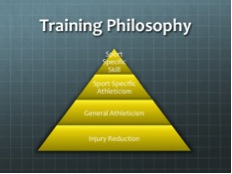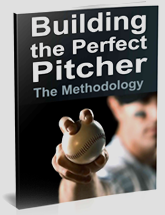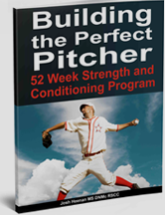Interview With Josh Heenan
(Written by Michael Wittner)
For more than seven years, Josh Heenan has worked in the field of sports training and medicine. He has a doctorate in Integrated Medicine and is currently Head Strength Coach and Doctor of Integrated Medicine at Moore Fitness and Physical Therapy in Southport, Connecticut. Prior to working at Moore, he was the Head Strength and Conditioning Coach for Sacred Heart University’s Baseball Program, a Division 1 baseball school. In addition, Josh has a master’s degree in Human Movement and Sports Psychology and bachelor’s in Exercise Science.
Josh currently trains athletes at numerous levels starting from high school and continuing through the professional level. He also has been a consultant to multiple organizations for sports training and rehabilitation. In an exclusive interview, Josh described his influences and philosophies in training, medicine, and rehabilitation.
Mike: What made you interested in the field of strength and conditioning, physical therapy, and medicine?
Josh: From when I was very little I always remember my father exercising. He was in the sports medicine field during his early 20′s working with the Celtics and Patriots. From there he became a police officer and always said his job was a “full-contact sport” and prepared for the worst so he would always come home in one piece. When I was about 14 I fell in love with the process of training and how the hard work allowed me to stay ahead of my competition.
M: Were you considering other majors at the time or were you only interested in strength and conditioning, physical therapy, and medicine?
J: If I did not have option to play baseball in college, I would have likely tried to become a Navy SEAL. I love the mental side of training (which they have come close to mastering) and pushing my body to the limits was enticing—not to mention being our first line of defense for the USA.
M: After entering the field, how has it made an impact on your life?
J: Many people say they love their jobs, but I doubt many love it as much as I do. I have the best clients in the world. I wake up everyday excited to help motivated people (athletes and non-athletes) pursue their goals. I was never a reader growing up (this was evident in probably the worst SAT English/Math split in the history of the exam), but once I entered college I literally read anything I could get my hands on in the field. To this day, I read research whenever I have a free minute and go to bed reading research. We have come so far in the fields of performance enhancement, therapy, and medicine—yet we are still barely scratching the surface.
M: What is your philosophy on physical training and how is it different from other trainers?
J: Everyone moves differently due to posture, orthopedics, injuries, and other limitations; not to mention each has a different health history and short/long term goals. Posture dictates function. In turn, each person should be treated as an individual and look for relative improvements.

M: In your experience, what are the most limiting and most common problems that your athletes have?
J: Most young athletes don’t move very well and are incredibly weak. Everyone wants the magic formula to run fast, throw hard, and move well. It’s really simple, learn to move well and get as strong as possible in movements that relate to your ultimate goal(s). Strength is corrective and will allow you to express your potential for speed and health.
M: How do these problems affect the athlete’s performance in training and playing their sport?
J: Strength and movement limitations are the reasons we get injured (except for contact injuries). My number one goal as a coach/therapist is to keep our athletes healthy and on the field.
M: Is there a certain way that one should train during the season vs. the off-season?
J: These are generalities, but in-season we tend to use less total volume of work with a bit higher intensity and off-season we use more volume of work.
M: Which is more important strength or agility, or are both needed in order to keep each other balanced? Why?
J: Strength is the foundation for speed and agility. With greater strength, we have a higher ability to express force output through agility, power, and speed. Strength elevates all athletic qualities.

M: Lastly, how would you define eating properly? Is it different for every person? Why?
J: Eating “properly” is determined by someone’s goals. If you want to be the next Kobayashi, then eating 50 hot dogs a day may not be the worst thing for your goals. Everyone defines healthy and fit in a different way– you would have to define it before I can advise on how to best attain those goals.

M: Thank you very much for your time. It was a very informative interview.
J: It was my pleasure!











Leave a Reply